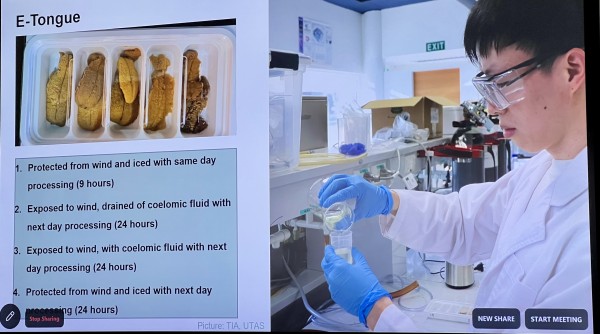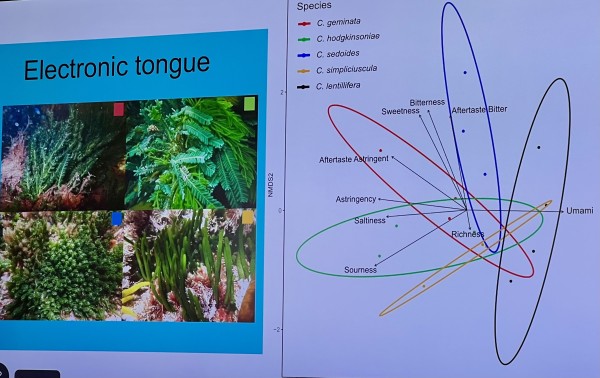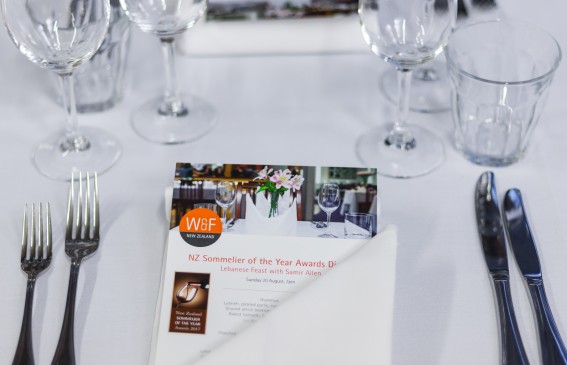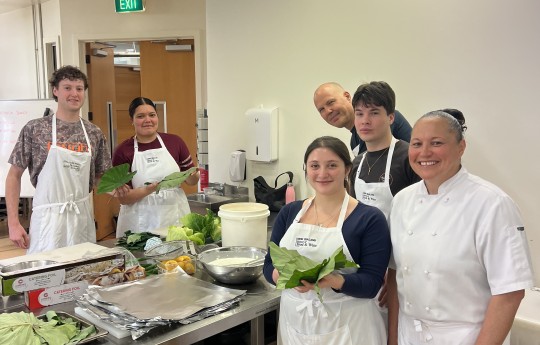Tasmania - Symposium of Gastronomy 2024

The best aspect about attending a conference on gastronomy is that you meet lots of people who like food (and wine). The Symposium Australian of Gastronomy celebrated its 25th anniversary with a 4-day event in Launceston, Northern Tasmania. Attracting primarily hospitality tutors and academics from around Australia, there was also a small contingent from New Zealand also making presentations.
Aboriginal peoples are thought to have crossed from the mainland, when the Bassian Plain land bridge existed, sometime during the previous 40,000 years. Geologist believe that the Bassian Plain disappeared about 12,000 years ago forming the waterway known today as Bass Strait.

The keynote speaker was Professor Emma Lee a trawlwulwuy woman of tebrakunna country, north-east Tasmania and professor at the National Centre for Reconciliation, Truth and Justice at Federation University.
Emma spoke about the sea-country as sacred, a place of ancestors that defines Tasmania. She explained that women come from the sea while men are of the land. That whatever washed up on the shore belongs to women, abalone, crayfish. There was a time when 'strangers who came in boats across the sea'. 'Sea country is the guiding domain of us as women'.
In recent years, Emma's group have lobbied state government to access fishing quota for hand-harvested, wild-catch abalone (pāua) to benefit their communities and be able to sell on the local market. Tim Russell-Jarvie described the recent foundation of Land and Sea Aboriginal Corporation Tasmania as a 60,000 year start-up creating a new value chain for wild-catch abalone and other seafoods.

Tasmania has worked hard over the last decade to build its tourism events around art and food and indigenous culture. Jo Cook, Food Director of the annual Dark Mofo Winter Festival which along with Mona Museum near Hobart, are helping to redefine and capture the imagination of tourists. The visitor experience is enhanced by celebrating local foods and Tasmania's dynamic wineries with their cool climate wines driven by sparkling wines and pinot noir. Click here for Celia's notes on Wines of Tasmania.
Launceston

Launceston is located in northern Tasmania along the Tamur River.
In 1798 George Bass and Andrew Flinders sailed from New South Wales to Van Diemen’s Land, the previous name of Tasmania, to investigate settlement opportunities. They sailed up the Tamar River and were satisfied with the prospects in this new land. In 1804, the first British troops arrived to claim the land. They also brought convicts. Tasmania had a long history as a penal colony which now forms an important aspect of its tourism story. Find out more about Tasmania's convict history.
River Tamar/ kanamaluka

The River Tamar/ Kanamaluka is a tidal estuary that traverses 70-kilometre north to the sea. Despite being called a river, the tidal flows are evident. Two rivers, the North Esk and South Esk converge at Launceston and along with the Tamar tidal surge have been responsible for serious floods. During the 2000s, major works were undertaken to protect low-lying areas of the city with a series of embankments and reclamations.
Cataract Gorge Walkway

Along the South Esk River is the location of the Cataract Gorge on the outskirts of Launceston. A highlight for me was to take the Cataract Walk, on a very crisp, clear morning with -2 degree frost with boulders coated in ice. I walked up the steep hill that looks down to the gorge and later discovered a much flatter route on the north side of the river.

Work began on the Cataract Walk in 1890 with numerous bridges, cantilevered walkways around cliffs culminating in a swimming pool and suspension walking bridge. This walk became a Victorian haven with a tea house, band rotunda, peacocks and exotic trees. Today you can view magnificent redwoods (Sequoia gigantium), Himalayan cedar (Cedrus deodara), even Pinus radiata along with native trees like the Black Peppermint gum (Eucalyptus amygdalina) sacred to the aboriginal people.
UNESCO Creative City of Gastronomy

In 2021, Launceston was designated a UNESCO Creative city of Gastronomy which has inspired a concerted focus to advance the stories of local food and wine. Its Saturday Harvest Farmers Market provides a showcase for local products including truffles from introduced oak trees.
Wave to Plate

The sea is very important to an island and 'wave to plate' was a regular theme in many presentations. We learnt of the struggle for access to abalone fisheries of which 90% are exported each year. The importance of how abalone is cooked was also discussed. The first experience of eating abalone is very important as it can easily become tough and chewy and put people off. The ideal texture from cooking is between calamari and scallop with chefs using the Asian technique of velveting: to coat a defrosted abalone with a carbohydrate such as cornflour. This makes the abalone more delicate to eat.
Training people how to prepare wild-caught seafood have resulted in Chef Information Days.
Could sea grapes be the next gastronomic treat?

Analysing the taste profile of edible seaweed with an electronic tongue, provides interesting insights and is arugably more accurate than a human tongue. There was also a presentation on sea urchines (kina) which are invading Tasmanian coasts and how to harvest this predator - we have the same issue in New Zealand.

Like the sea grapes, the taste and texture of sea urchins is effected by when and how they are harvested. Questions of palatability remain which are influenced by location, season and methods of preservation.


Harvesting methods may influence flavour, what is optimal time of year to harvest? Before spawning? Age and sex of the urchin? Size? Diet? There are many variables to consider.
Regenerative Vanua

Robert Oliver and Votausi MacKenzie-Reur of Vanuatu talked about the impact of the Food Revolution Television series and the transformational goals of bringing honour to the local traditions of growing and cooking foods. Regernative Vanua (Whenua or land) is a new project in the Pacific Islands to foster the development of skills in farming and cooking with a nutritonal lens.
25 Years of Farmers Markets Association

Jane Adams, travelling from Sydney, celebrated the foundation of the Australian Farmers Markets Association, 25 years ago. Looking back, the importance of farmers markets to food supply chains, offering wholesome choice for consumers and playing a vital role in food entreneurship, positive health and nutrition.
Emu Gin and Blue-purple cocktail

Professor Emma Lee paired up with Colette Geier to share Wandering Emu Gin with dilang, 100% Aboriginal owned enterprise and Colette's special (secret) beverage created from native plants, as part of her PhD research. The beverage turns an evocative sapphire blue-purple.

And for winelovers, there is an impressive array of wines to try. Read more here.

And naturally, there is always time for a gastronomic feast and the opportunity to meet and discuss the activities of the day.
Celia Hay
10 July 2024






